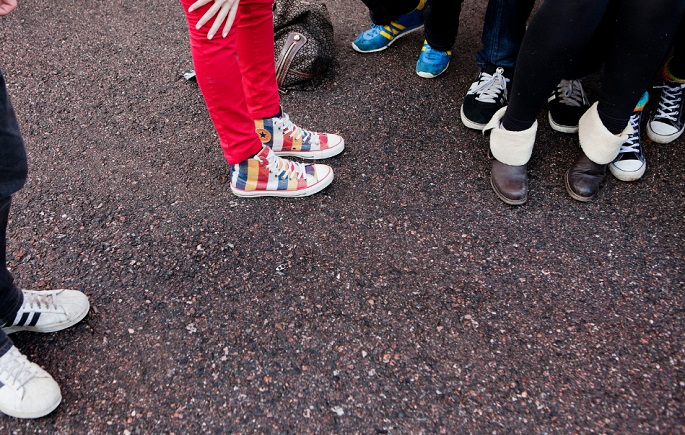Measures combating violence against children become effective
Published : 15 Apr 2023, 04:13
The Non-Violent Childhoods Action Plan taken to combat violence against children and young people in 2020–2025 is progressing well, said a government press release on Friday.
The Action Plan contains 93 different measures to combat violence and to help victims of violence.
According to a recent mid-term evaluation, of the measures listed in the Action Plan, 44 have progressed very well, while work on another 44 measures is still in the early stages or in the planning stage.
Work on three measures has not yet started, and the mid-term evaluation was not able to assess progress in two measures.
The Action Plan has been implemented as part of different organisations’ ordinary work through intersectoral cooperation.
“Combating violence against children requires that we all take part in addressing problems — from decision-makers, experts and professionals to adults who are close to children. Children and young people can overcome even difficult situations and lead a good life if adults fulfil their responsibility towards children and young people and support them,” said Senior Ministerial Adviser Marjo Malja from the Ministry of Social Affairs and Health.
The mid-term evaluation provides a comprehensive statistical review of violence experienced by children. The number of young people committing violent crimes decreased particularly in the 2010s, but at the same time the number of violent crimes committed by the most criminally active young people has increased.
However, children and young people’s experiences of safety outside the home have mainly improved.
According to the Child Victim Survey conducted in 2022, the decline in family violence experienced by children and young people has stopped and particularly psychological violence in families has become more common since 2013.
School health promotion surveys show that young people, especially girls, experience sexual violence in its various forms more often than before.
The mid-term evaluation also contains three new objectives, one of them being the prevention of street violence among underage children. Assaults committed in public spaces most often involve hitting and kicking, but about one out of six cases reported to the police also involve the use of edged weapons. In recent years, it has also become more common to take photos or videos of assaults and share them on social media.
It is crucial to intervene in the violence and crimes committed by children and young people at the earliest possible stage.
“There is a large number of actors from authorities to organisations that combat street violence in Finland. We have the skills and means but what we need to do is to collaborate more and even more closely than before,” said Senior Specialist Emilia Hämäläinen from the Ministry of the Interior.
When children or young people repeatedly commit offences or if they commit serious offences, long-term multiprofessional support is often needed to break the cycle of crime and substance abuse.
With the help of the funding from the Ministry of Justice, intersectoral work has been conducted in four areas to support the efforts to break the cycle of crime and substance abuse.
“Supporting young people alone isn’t always enough. Support is also provided to families to strengthen parenting skills. It is also essential to assess the measures taken to prevent crime,” said Senior Specialist Saija Sambou from the Ministry of Justice.


